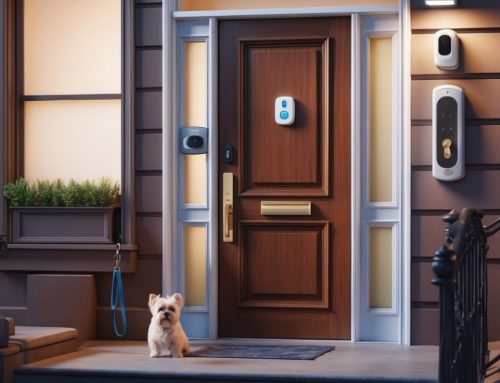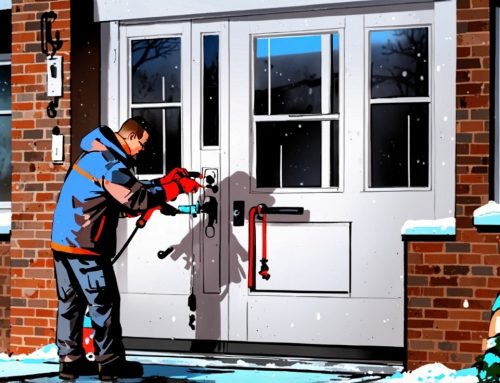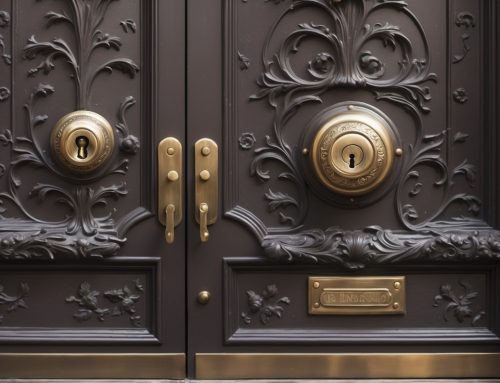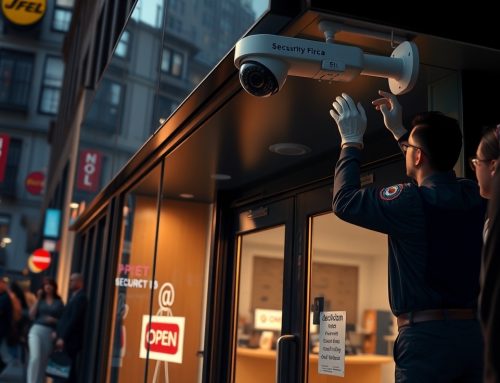When it comes to securing shared spaces like bike rooms in New York City buildings, choosing the best lock options is essential for preventing theft and ensuring peace of mind for residents. With the high volume of bike traffic and limited storage space in NYC, building managers and property owners must invest in reliable, high-security locks that can withstand daily use and deter unauthorized access. iLocksmiths, a trusted locksmith company with over 11 years of experience serving all five boroughs, offers expert solutions tailored to the unique security needs of NYC properties. Specializing in both residential and commercial locksmith services, iLocksmiths provides top-rated lock installation, repair, and replacement services, including advanced locking systems ideal for bike storage areas. Their team of over 40 skilled technicians is available 24/7, ensuring fast response times and dependable service whenever you need it. Whether you’re managing a building in Manhattan, Brooklyn, Queens, or the Bronx, iLocksmiths can help you choose the most secure and durable lock options for your bike room.
Top-Rated Lock Types for Securing Bikes in Shared Building Spaces
When it comes to securing your bicycle in a shared building space in New York City, choosing the right lock is not just a matter of convenience—it’s a necessity. With the growing popularity of cycling and the increasing demand for secure bike storage in residential and commercial buildings, the risk of theft has also risen. According to the NYPD, over 4,000 bicycles were reported stolen in New York City in 2023 alone, with many of these thefts occurring in shared or semi-private spaces such as building bike rooms. This makes selecting a top-rated lock type essential for any cyclist living in the city.
In shared building spaces, the challenge is twofold: you need a lock that can withstand tampering and one that fits within the often tight and crowded confines of a communal bike room. Not all locks are created equal, and understanding the different types available can help you make an informed decision that balances security, convenience, and cost.
One of the most trusted options for urban cyclists is the U-lock, also known as a D-lock. These locks are made of hardened steel and are resistant to cutting and leverage attacks. Their rigid shape makes them difficult to manipulate, and when used correctly—locking both the frame and the wheel to a solid anchor—they provide a high level of security. Brands like Kryptonite and ABUS offer U-locks that are specifically rated for high-theft areas like NYC. For example, the Kryptonite New York Fahgettaboudit Mini is often cited as one of the most secure U-locks on the market.
Another popular choice is the heavy-duty chain lock. While bulkier and heavier than U-locks, chain locks offer flexibility in how and where you lock your bike. This can be particularly useful in crowded bike rooms where fixed racks may not always be available. Look for chains made of hardened steel with hexagonal or square links, which are more resistant to bolt cutters. Pairing a strong chain with a high-quality padlock can offer a level of security comparable to or even exceeding that of a U-lock.
Folding locks are a newer innovation that combines the rigidity of a U-lock with the flexibility of a chain. These locks are made of steel bars linked by rivets and can be folded into a compact shape for easy storage. While not as robust as the top-tier U-locks or chains, high-quality folding locks like the ABUS Bordo Granit X-Plus offer a good balance of security and portability, making them a viable option for indoor bike rooms with moderate risk levels.
Cable locks, while lightweight and easy to use, are generally not recommended as a primary locking mechanism in NYC. They can be easily cut with basic tools and are best used as secondary locks to secure components like wheels or seats. However, when combined with a U-lock or chain, they can add an extra layer of deterrence.
In addition to the type of lock, how you use it is equally important. Always lock your bike through the frame and at least one wheel to a fixed, immovable object. In shared bike rooms, opt for racks that are bolted to the ground or wall. If your building allows, consider installing a personal anchor point for added security. Some cyclists even use two different types of locks to deter thieves who may only be equipped to defeat one kind.
“A thief with bolt cutters can get through a cable lock in seconds, but a properly used U-lock or heavy-duty chain can take several minutes or more—time most thieves don’t want to risk,”
says John Ulczycki, a safety expert with the National Safety Council.
Smart locks are also gaining popularity, especially among tech-savvy urban cyclists. These locks use Bluetooth or Wi-Fi to connect to your smartphone, allowing for keyless entry and real-time alerts if someone tampers with your bike. Some models even include GPS tracking, which can be invaluable in the event of a theft. While generally more expensive, smart locks like the Linka Smart Lock or the Lattis Ellipse offer convenience and added security features that traditional locks lack.
For those living in high-theft neighborhoods or buildings with minimal security, investing in multiple layers of protection is wise. This might include a combination of a U-lock and a chain, or a smart lock paired with a traditional lock. Additionally, installing security cameras in the bike room can act as both a deterrent and a tool for recovery in case of theft.
Here are some top-rated lock types and models recommended for securing bikes in shared building spaces:
- Kryptonite New York Fahgettaboudit Mini U-Lock – Known for its extreme resistance to bolt cutters and leverage attacks.
- ABUS Granit X-Plus 540 U-Lock – Offers a high level of security with a double-bolting shackle and pick-resistant cylinder.
- Hiplok Gold Chain Lock – A wearable chain lock made of 10mm hardened steel, ideal for flexibility and strength.
- ABUS Bordo Granit X-Plus Folding Lock – Combines portability with high security, suitable for moderate-risk environments.
- Linka Smart Lock – A keyless smart lock with tamper alerts and optional GPS tracking.
When choosing a lock, also consider the environment of your building’s bike room. Is it monitored? Is access restricted to residents only? Are there security measures like keycard entry or surveillance? If not, you may want to take additional steps such as registering your bike with the NYPD or using a GPS tracker.
For residents in areas like Brooklyn or Queens, where bike theft rates can be higher, local locksmith services can provide tailored advice and installation options. Visit our Brooklyn service area page to learn more about how we can help secure your bike and property. You can also explore our residential locksmith services for comprehensive home and bike room security solutions.
In conclusion, securing your bike in a shared building space in NYC requires more than just a basic lock. It demands a strategic approach that includes selecting the right type of lock, using it correctly, and considering additional security measures. By investing in a top-rated lock and staying informed about best practices, you can significantly reduce the risk of theft and enjoy greater peace of mind.
Key Features to Look for in a Bike Room Lock System
When selecting the best lock system for a bike room in a New York City building, it is essential to consider several key features that ensure both security and convenience. NYC is known for its high population density and active cycling community, which makes secure bike storage a top priority for residential and commercial properties alike. The right bike room lock system should offer robust protection against theft, be user-friendly for residents, and integrate seamlessly with the building’s existing security infrastructure.
First and foremost, durability and strength are critical. A high-quality lock system should be constructed from tamper-resistant materials such as hardened steel or reinforced alloys. These materials can withstand common break-in methods like bolt cutters, drills, or prying tools. In a city like New York, where bike theft is a persistent issue, investing in a lock system that resists forced entry is non-negotiable. Additionally, weather resistance is another factor to consider, especially in bike rooms that may be partially exposed to the elements. Corrosion-resistant finishes and sealed locking mechanisms help maintain functionality over time.
Another important feature is access control. Modern bike room lock systems often incorporate electronic access solutions such as key fobs, RFID cards, or smartphone-enabled locks. These systems not only provide convenience for users but also allow property managers to monitor and control access remotely. For example, if a resident moves out, their access can be revoked instantly without the need to change physical locks. This level of control is especially beneficial in multi-unit buildings where turnover is frequent. Some advanced systems even offer audit trails, allowing building management to track who accessed the bike room and when, adding an extra layer of security.
Integration with existing building security systems is also a key consideration. A bike room lock system should be compatible with the building’s overall security infrastructure, including surveillance cameras, intercoms, and alarm systems. This ensures a cohesive security strategy and allows for centralized monitoring. For instance, integrating the lock system with security cameras can help deter theft and provide valuable evidence in case of an incident. In high-traffic buildings, this integration can significantly enhance the overall safety of the premises.
Ease of use is another essential factor. Residents should be able to access the bike room quickly and without hassle. Systems that require minimal steps to unlock, such as proximity-based key fobs or mobile apps, are ideal. At the same time, the system should not compromise on security for the sake of convenience. A well-designed lock system balances both aspects, ensuring that users feel secure while enjoying seamless access. For buildings with a diverse tenant base, including families and elderly residents, intuitive operation is particularly important.
Scalability and flexibility are also worth considering. As the number of residents or bike users grows, the lock system should be able to accommodate additional users without requiring a complete overhaul. Modular systems that allow for easy upgrades or expansions are ideal for growing communities. Additionally, the ability to assign different access levels can be useful. For example, building staff might need 24/7 access, while residents may only require access during certain hours. A flexible system can adapt to these varying needs efficiently.
Maintenance and support should not be overlooked. A reliable lock system should come with a solid warranty and access to professional support services. In the event of a malfunction or security breach, quick response times are crucial to maintaining the safety of the bike room. Partnering with a trusted local locksmith service, such as commercial locksmith experts, ensures that any issues can be resolved promptly and professionally. Regular maintenance checks and software updates (for electronic systems) can also help prevent problems before they arise.
Cost-effectiveness is another important aspect, especially for property managers working within a budget. While it may be tempting to opt for the cheapest option, it is vital to consider the long-term value of the lock system. Investing in a high-quality, durable, and feature-rich system can save money in the long run by reducing the risk of theft, minimizing maintenance costs, and avoiding frequent replacements. Evaluating the total cost of ownership, including installation, maintenance, and potential upgrades, provides a clearer picture of the system’s value.
Finally, compliance with local building codes and regulations is essential. NYC has specific safety and accessibility standards that must be met, particularly in multi-unit residential buildings. Ensuring that the chosen lock system adheres to these regulations not only avoids legal complications but also enhances the overall safety and usability of the bike room. Consulting with experienced professionals who understand local requirements can be invaluable during the selection and installation process.
In conclusion, choosing the right lock system for a bike room in an NYC building involves a careful evaluation of several key features. From durability and access control to integration, ease of use, and compliance, each aspect plays a vital role in ensuring the security and functionality of the bike storage area. By prioritizing these features and working with trusted professionals like those at iLocksmiths, property managers can create a secure and user-friendly environment that meets the needs of their residents and protects valuable assets.
In conclusion, securing your bike in a New York City building bike room requires more than just a basic lock—it demands a strategic approach using high-quality, tamper-resistant options. From heavy-duty U-locks and chain locks to advanced smart locks with tracking features, the best choice depends on your specific needs and the level of security in your building. Investing in a reliable lock not only protects your bike from theft but also gives you peace of mind in a city where bike security is a real concern. By choosing the right lock and following best practices, you can ensure your bike stays safe and ready for your next ride.






